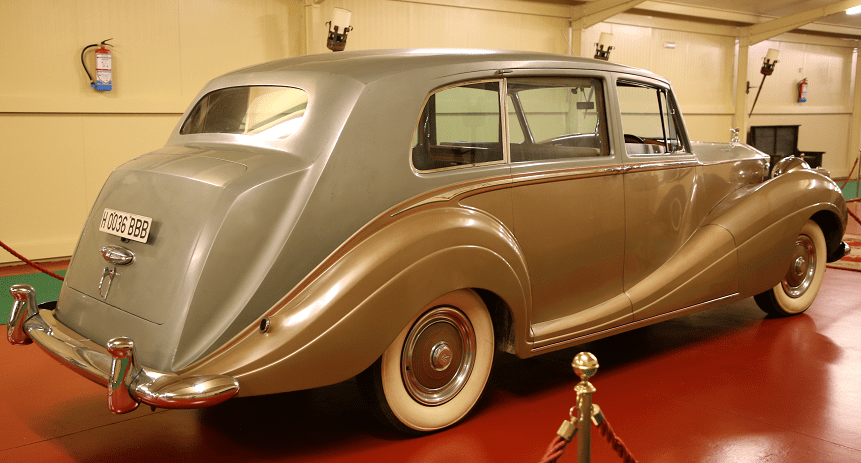Rolls-Royce Phantom IV by H. J. Mulliner from 1956.
H. J. Mulliner & Co. was a well-known British coachbuilder operating from Bedford Park, Chiswick, West London. The company which owned it was formed by H J Mulliner in 1897 but the business was a continuing branch of a family business founded in Northampton in the 1760s to hire out carriages. In December 1909 the controlling interest in this company passed to John Croall & Sons of Edinburgh. Croall sold that interest to Rolls-Royce in 1959.
The Rolls-Royce Phantom IV is a British automobile produced by Rolls-Royce. Only eighteen were made between 1950 and 1956, sold only to buyers whom Rolls-Royce considered worthy of the distinction: the British royal family and heads of state. Sixteen are known to still exist in museums as well as in public and private collections.
Characteristics
Kneeling Spirit of Ecstasy (1934-1939 and 1946-1956) mounted on most of the radiators, except units 15 and 18 (chassis 4CS4).
Rolls-Royce broke with their earlier decision to cease production of the series of “big” Rolls-Royce Phantoms after the end of World War II. The Phantom IV chassis differed from those of the shorter, production post-War models, the Silver Wraith and the Bentley Mark VI; apart from a larger size and an engine with increased capacity and power, they have an additional cross-member at the centre of the cruciform bracing and 10-stud road wheel mountings.
The engine was a derivative of the 8-cylinder rationalized B range of petrol engines (formed by four, six and straight eight). Specifically it was a refined version of a B80, the last three of a B81, both used in military and commercial vehicles. The IV is the only Rolls-Royce motorcar to be fitted with a straight-8 engine, which was powerful but could also run long distances at a very low speed, an important feature for ceremonial and parade cars.
All examples of this exclusive series were bodied by independent coachbuilders, and most of their bonnets surmounted by the kneeling version of the Spirit of Ecstasy, which had been unveiled in 1934 and used in various other models.












